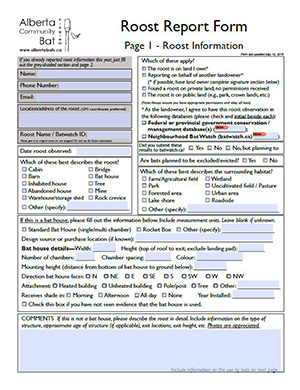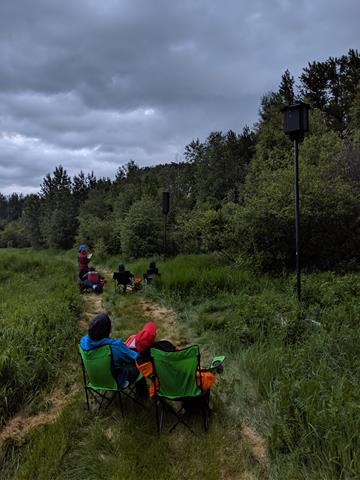
Community Science
Bats need a safe, warm place to rest and raise their young (called pups). Mother bats often live in groups, known as maternity colonies. Males typically roost alone during the summer, so groups of bats are likely to be maternity colonies.
Structures that are home to maternity colonies are important for bats, especially for the growth and survival of pups. Knowing the locations of maternity colonies is important for monitoring bats as well as for filling gaps in our understanding of bats. Filling knowledge gaps is important to develop more effective conservation strategies and for identifying new threats that bats may be facing.
Many bats roost in buildings on private land, so public participation is critical for the success of research and monitoring programs.
If you have bats, considering participating in the community science project (Skip to Instructions).
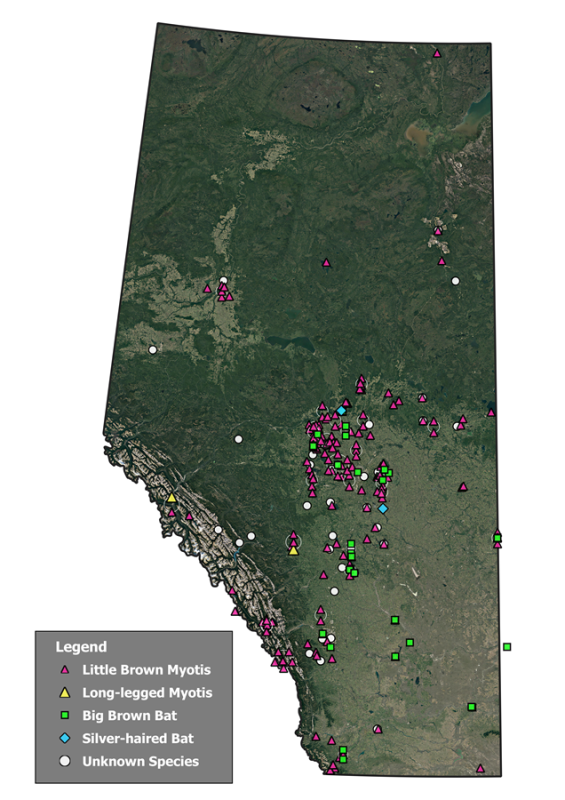
What have we found so far?
- About 86% of all reported roosts are used by Little Brown Myotis (species confirmed using DNA barcoding). Big Brown Bats account for most of the remainder.
- Reports of bat observations are most concentrated in the Calgary to Edmonton corridor.
- Buildings and bat houses are both commonly reported. Natural roosts are rarely reported, likely because they are difficult to find. Patio Umbrellas and Bridges are rarely reported, despite being common bat roosting sites.
What are we doing with this information?
- Reported bat roosts are key locations where we collect guano (poop) to test for Pseudogymnoascus destructans, the fungus that causes white-nose syndrome in bats. We have already sent dozens of samples for testing. We have not detected the fungus in any of the samples tested (as of 2021).
- Reports of bat roosts are the focus of a study examining exposure of bats to neonicotinoid-based pesticides.
- Samples collected at roosts are anticipated to be used in a study examining the diet of bats.
- Reports of bat counts will be provided to support analyses of population changes in bats, such as through the North American Bat Monitoring Program.
- Other studies are being planned!
How to participate
OPTION ONE—REPORT A ROOST OR COUNT
Step 1 — Locate or build a roost
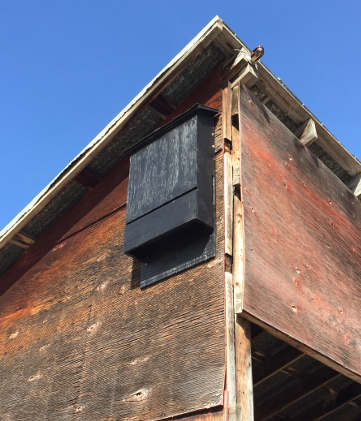
Before you can begin, you need to know of the location of a bat roost.
Suitable roosts include areas where bats regularly reside, such as:
- Buildings, such as in an old barn, attic, under siding, etc.
- Bridges
- Bat houses
- Patio Umbrellas
- Tree crevices or under bark
- Rock crevices or caves
- Any other structure with bats
Don’t know of a bat roost? Then install a bat house and let us know how it does (even reports of non-use are important)—See Step 2 for information on submitting observations.
Step 2 — Document a roost
Collect basic information about the roost, including:
Location (such as coordinates from mapping software or a GPS unit)
- Date
- Brief description of the roost and signs of bat activity
- Photos, if available
The preferred submission methods are to (1)download and print the roost report form (.pdf) and email the completed form to [email protected]; OR (2) use the online Google Form. Photos are also appreciated and can be emailed to [email protected].
Emailing a photo of the form also works well (or mail it along with your guano sample).
If you are filling out the PDF form digitally, we recommend using Adobe Acrobat to enter the data and then be sure to email us the saved form.
Be sure to read the INSTRUCTIONS before counting bats.
Step 3 — Send us a guano sample (optional)
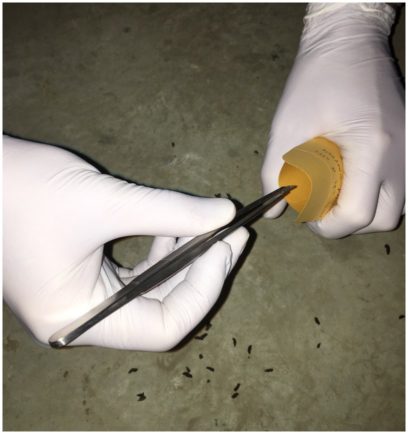
If you are able to send us a guano sample (i.e., bat poop), we may be
able to have it tested to see what species is using the roost (funds
permitting).
Read the protocol for how to collect bat guano for DNA testing.
Do not place guano in a plastic bag – it needs air flow! Use a
paper envelope instead. Try to sample guano deposited during the current
year.
Step 4 — Provide ongoing monitoring (optional)
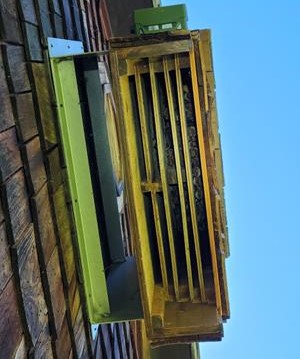
Ongoing monitoring of your roost provides valuable data needed for assessing bat populations in Alberta. If possible, we encourage participants to count bats exiting from roosts one to four times during the summer period.
For instructions, see the protocols for counting bats in a colony.
Submit your monitoring results to [email protected]. Using the roost report form is encouraged (see Step 2).
Reports of roosts are greatly appreciated, even if ongoing monitoring is not planned.
OPTION TWO—REPORT A RANDOM BAT OBSERVATION
Have you been keeping notes or observed something unusual about bats?
Please report your observations using our random bat observations Google Form. These observations could be used to help improve bat management in Alberta, especially once enough observations are compiled that we can begin to identify trends.
Have you photographed or recorded a bat?
Reporting observations of bats can be very useful for understanding the seasonal timing, distribution and habitat use of bats in Alberta. Observations are most useful when compiled into a database that can later be examined to identify important trends. There are several ways to report your observations, including:
Be sure you add your observations to the “Bats of Western Canada” project on iNaturalist!
Whenever possible, and safe to do so, please take pictures (without disturbing bats) so that we can attempt to identify the species. If you have a detector, you can also upload your acoustic files to iNaturalist!
Note: Bats found roosting with multiple individuals are likely using the structure as a maternity roost, and you should instead report it as a colony (see Option One, above).
Photo credits: Community science photos by Cory Olson

